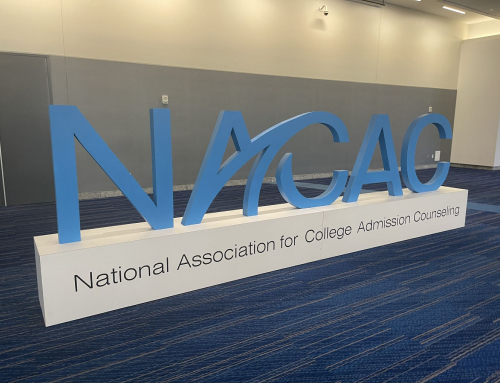
WholeRen Education participated in NAFSA’s (National Association for Foreign Student Affairs) 2019 Annual Conference, held in Washington DC at the end of May. International education leaders and higher educational institutions from worldwide were present at the conference to discuss trends in international recruitment and education, higher education policies for international students, and participate in seminars that presented data-driven international education discourse.
Lessons learned from NAFSA 2019:
WholeRen NAFSA 2019 Poster Presentation
Given WholeRen’s long-standing and extensive work supporting student success, Second Chance Team Manager Sa Guo and CEO Andrew Chen were selected to present a poster titled “Increasing Chinese International Students’ Readmission Rate”. They showcased data surrounding reasons for academic dismissal, along with the struggles that Chinese international students face when studying abroad. In addition to dismissal rate/reason data, they were able to share insights with colleagues about proactive strategies to employ in order to avoid student dismissals, as well as offer concrete suggestions to support students’ successful readmission and retention at institutions.

International Education Trends
-International students remain a priority for U.S. institutions; statistics indicate that the 2018 international student market has an economic impact of $45.3 billion.
– Studying in the United States remains a top choice for international students.
– Although the United States has been engaged in a trade war, American colleges and universities still welcome international students.
-One presentation highlighted the finding that 70% of international students only focused their educational goals on 200 of the thousands of U.S. colleges and universities; one of every three international students are purported to choose colleges in Texas, California or New York.
Funding for Education Abroad
– Some students give up the chance to study abroad due to financial considerations.
-Students do not know that many community colleges have established transfer agreements with four-year universities.

International Student Employment Trend
– International students will consider the local job market/workforce when choosing a college.
– According to a 2017 WES survey, most international students feel that it is worthwhile to complete their studies in the United States but nearly 40% of employed alumni feel that their salary is lower than expected when they graduate.
– Growth of foreign graduates who stayed and worked in the U.S. continued to rise, but at a slower pace since 2017 (Pew Research Center)
– Most OPT students are from Asia.
– Between 2006 and 2012, 24% of technology companies had at least one non-U.S. born co-founder (Kauffman: The Foundation of Entrepreneurship October, 2012).

At NAFSA 2019, WholeRen furthered its understanding of frontline international education issues that are of concern to institutions and students. This conference allowed WholeRen staff to meet with admissions and enrollment officers to discuss each institution’s specific concerns/requirements for admission so as to provide the most accurate service for international students who are considering studying in the U.S.




